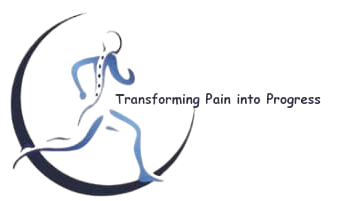Myths & Facts: Dispelling Common Misconceptions
As a physiotherapist with years of experience helping patients recover from injuries and manage chronic pain, I’ve seen firsthand the confusion surrounding the use of hot packs and cold packs. While these simple therapies are among the most effective tools we have, many patients misunderstand their proper use, leading to ineffective treatment and, in some cases, worsening conditions.
Let’s take a closer look at the most common myths about hot and cold packs:
Myth 1: “Heat Can Be Applied Immediately After an Injury”
One of the most common myths I encounter is the belief that heat can be applied right after an injury (e.g., sprain or strain) to relieve pain. This is a dangerous misconception.
- The Reality: Heat increases blood flow, which can exacerbate swelling and inflammation. In the first 48 hours after an injury, what your body needs most is to calm down that inflammation—not amplify it. This is where cold therapy comes in.
- Correct Method: Cold therapy is the go-to treatment immediately after an injury. Applying a cold pack causes the blood vessels to constrict (vasoconstriction), reducing blood flow and limiting swelling. It also numbs the area, providing pain relief. So, for those critical first hours after an injury, cold is the way to go.
Myth 2: “The Hotter or Colder, the Better”
Some patients believe that cranking up the heat or using ice directly on the skin will yield faster or better results. Unfortunately, this approach can lead to burns, frostbite, and other skin injuries.
- The Reality: Extremes in temperature don’t heal injuries faster—they increase the risk of skin and tissue damage.
- Correct Method: When using a hot pack, it should feel comfortably warm, not scorching. Use a towel or cloth as a barrier between the heat source and your skin, and limit application to 15-20 minutes at a time. The goal is to relax your muscles, not to fry them. Similarly, ice packs should never be applied directly to the skin. Always wrap them in a towel or cloth, and keep them on for only 10-15 minutes at a time. Too much cold can lead to frostbite, damaging the tissues you’re trying to heal.
Myth 3: “Heat and Ice Can Be Used Interchangeably”
Another common misconception is that heat and cold therapy are essentially the same and can be used interchangeably.
- The Reality: Heat and cold serve very different purposes and are most effective when used in the right context.
- Correct Method: Cold therapy is ideal for acute injuries—think of sprains, strains, or any situation where you see swelling. It reduces inflammation and numbs sharp pain. Heat therapy is best for chronic conditions, such as ongoing muscle soreness, stiffness, or joint pain. It helps to relax muscles, increase blood flow, and ease stiffness, making it perfect for conditions like arthritis or chronic back pain. Using the wrong therapy at the wrong time can slow down your recovery or even exacerbate your symptoms.
Myth 4: “Longer Application Means Better Results”
Patients often think that leaving a hot pack on for hours or keeping an ice pack on indefinitely will speed up healing. This myth can be particularly harmful.
- The Reality: Your body needs a balanced approach to temperature therapy.
- Correct Method: Applying a hot pack for too long can lead to burns and skin damage, especially in sensitive areas. Heat should typically be used in 15-20 minute sessions, with breaks in between to allow your skin to cool down and your body to adjust. Similarly, prolonged application of cold can lead to frostbite or nerve damage, which can set back your recovery. Use ice in short bursts of 10-15 minutes, then give your skin time to warm up before reapplying.
Myth 5: “Thermotherapy and Cryotherapy Are One-Size-Fits-All Solutions”
Many patients believe that heat or cold therapy alone can cure their injuries or pain. While these therapies are powerful, they are not one-size-fits-all solutions.
- The Reality: Heat and cold therapy should be part of a comprehensive treatment plan that includes physical therapy, exercise, and possibly other interventions like medication or even surgery in severe cases
Useful Links
Subscribe Now
Don’t miss our future updates! Get Subscribed Today!
©2024 Dr ujjwal Gupta All Rights reserved
